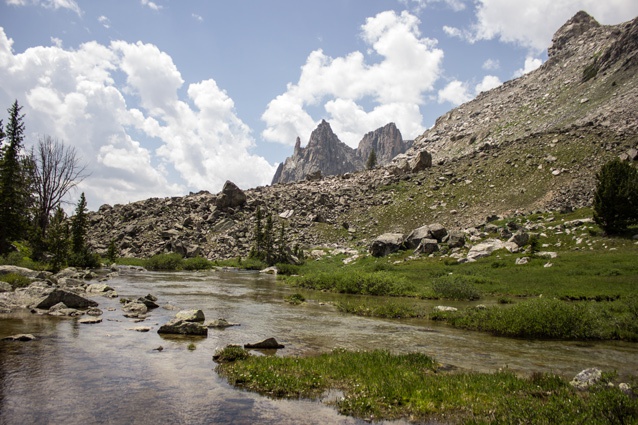



A team of Active Junky gear testers recently returned from a four-day trip to Wyoming’s Wind River Range, shocked by both the Range’s lack of foot traffic and surplus of natural beauty. Testers noticed overgrown trails as soon as they left the trailhead, the first indication of the Range’s overlooked bounty. Roundabout route finding, cautious bushwhacking (minus machetes) and rock scrambling became obligatory. Truly a stronghold of the wild, here are five reasons to go backpacking in the Wind River Range.

Thanks to nearby Yellowstone and Teton National Parks, millions of hikers and campers overlook the Wind River Range. The area maintains a sense of stillness that’s increasingly rare in our ever-shrinking world. Over a long holiday weekend, Active Junky trekkers spied only two other backpackers. In this slice of Wyoming, the bear tracks outnumber boot prints.

The Wind River Range’s night sky is simply spectacular. Chalk it up to the compelling magic of the landscape and a lack of light pollution. This unmatched stargazing is attributed to Wyoming’s designation as “the least-populated state” in the US.

These are real mountains, the kind of mountains that stop you in your tracks as soon as you see them. After that surreal majesty registers, there’s a newfound spring in your step (even with a heavy pack). Flat-topped granite mounds, spiny spires—the Winds have it all. An alpine climber’s paradise, sheer cliffs and cascading waterfalls evoke images of a miniature Yosemite Valley.

Anglers discover paradise in a plethora of holes, riffles and rapids. A spider web of infrequently fished streams and rivers interconnects thousands of alpine lakes. Lakes and ponds are thick with cutthroat trout eager to rise to a dry fly, so bring your skills and plenty of room on your memory card.

Don’t rely on trail maps here. Rugged and overgrown, some trails disappear into the forest, every step challenged by brambles and punctuated with wildflowers. Expect to use topographic maps and a compass. Want to test your skills? Pick a random lake on Google Earth, plot your route and navigate accordingly.